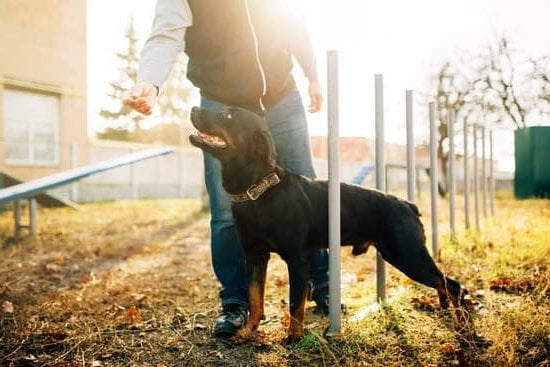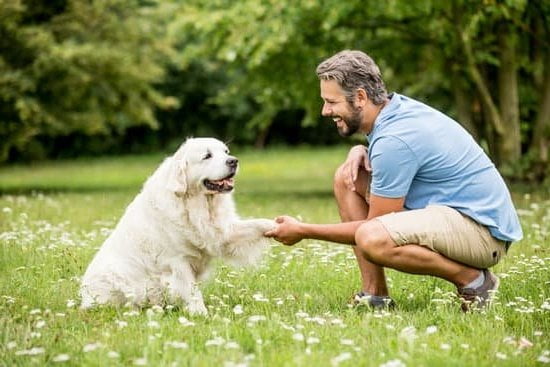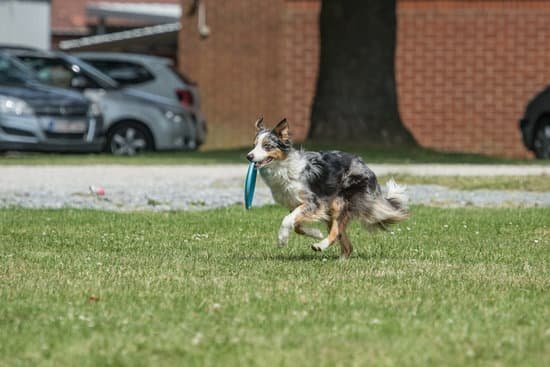Are you wondering how to train my service dog? Service dogs play a crucial role in providing assistance and support to individuals with various disabilities.
From guide dogs for the visually impaired to mobility assistance dogs for those with physical limitations, these specially trained animals can greatly improve the quality of life for their human companions. In this article, we will guide you through the ins and outs of training a service dog, from choosing the right breed to advanced training techniques for specific tasks.
The benefits of having a service dog are immense, as these highly trained animals can help their handlers navigate daily life with more independence and ease. Not only do service dogs offer physical support, but they also provide emotional comfort and companionship. Understanding the role of a service dog is essential before embarking on the training journey. These remarkable animals are not just pets; they are working partners that require dedication, patience, and ongoing care.
Choosing the right breed for your service dog is a critical first step in your training process. Different breeds have unique characteristics and strengths that make them better suited for specific types of assistance work.
Whether you need a seeing-eye dog, a hearing assistance dog, or a psychiatric service dog, selecting the right breed is key to ensuring success in training. Stay tuned as we delve deeper into basic training techniques, advanced task training, socialization skills, common behavioral issues handling, consistency, positive reinforcement methods in training your service dog effectively.
Benefits of Having a Service Dog
The benefits of having a service dog are numerous and can significantly improve the quality of life for individuals with various disabilities or medical conditions. Service dogs are specially trained to perform tasks that assist their handlers in a variety of ways, making everyday activities more manageable. These tasks can range from guiding individuals who are visually impaired to alerting those with hearing impairments to important sounds, such as alarms or someone calling their name.
One of the key advantages of having a service dog is the companionship and emotional support they provide. Service dogs often form strong bonds with their handlers, offering not only physical assistance but also comfort and reassurance in challenging situations. Moreover, having a service dog can increase independence and mobility for individuals with disabilities, allowing them to navigate the world with greater ease and confidence.
For those considering getting a service dog, it is essential to understand that owning one comes with responsibilities, including proper training and care. Knowing how to train my service dog is crucial in ensuring that it can effectively perform the necessary tasks to assist its handler.
Training a service dog requires time, patience, consistency, and positive reinforcement techniques to help them learn and master the skills needed to be effective in their role. By investing effort into training your service dog properly, you can maximize the benefits they provide and strengthen your partnership with them over time.
| Benefits of Having a Service Dog | How to Train My Service Dog |
|---|---|
| Improved quality of life for individuals with disabilities | The importance of time, patience, consistency, and positive reinforcement in training |
| Increased independence and mobility | Tasks such as guiding visually impaired individuals or alerting those with hearing impairments |
| Companionship and emotional support | Forming strong bonds between the handler and the service dog |
Understanding the Role of a Service Dog
Service dogs play a critical role in assisting individuals with disabilities in their daily lives. These specially trained dogs are more than just pets; they are essential companions that offer support, independence, and companionship to their handlers. Understanding the role of a service dog is crucial for both the handler and those around them to ensure that the dog can perform its duties effectively.
Service dogs are trained to perform specific tasks that help individuals with physical, sensory, psychiatric, or intellectual disabilities. These tasks may include guiding individuals with visual impairments, alerting individuals with hearing impairments to sounds, providing physical support or balance for individuals with mobility issues, and even detecting and responding to medical emergencies such as seizures. Each service dog is tailored to meet the unique needs of its handler based on their disability.
To train a service dog effectively, it is important to first establish a strong bond and clear communication between the handler and the dog. Positive reinforcement techniques such as treats, praise, and play can be used to motivate the dog during training sessions.
Consistency is key when teaching new commands or tasks, as service dogs rely on repetition to learn and retain information. Additionally, enrolling in formal obedience classes or working with professional trainers can provide valuable guidance on how to train my service dog properly for specific tasks related to their handler’s disability.
| Service Dog Training Tips | Importance |
|---|---|
| Establish bond & clear communication | Build trust and understanding |
| Use positive reinforcement techniques | Motivate the dog during training |
Choosing the Right Breed for Your Service Dog
When it comes to training a service dog, one of the most important steps is selecting the right breed for the job. Different breeds have different strengths and characteristics that make them better suited for certain tasks. It’s essential to choose a breed that not only has the physical capabilities for the tasks required but also the temperament and personality traits that will make them successful as a service dog.
Researching Breeds
Before deciding on a breed, it’s crucial to do thorough research on different breeds and their specific traits. Some breeds are known for their intelligence and trainability, while others excel in tasks such as mobility assistance or emotional support. Consider your own needs and lifestyle when choosing a breed, as well as the requirements of the tasks your service dog will be trained to perform.
Considerations for Selection
In addition to researching breeds, consider factors such as size, energy level, and coat type when selecting a breed for your service dog. For example, if you require a service dog for mobility assistance, you may want to choose a larger breed with good strength and endurance.
On the other hand, if you need a service dog for emotional support, a smaller or medium-sized breed with a calm demeanor may be more suitable. It’s also essential to consider any allergies or sensitivities you may have when selecting a breed with specific coat types.
Working With Breeders and Rescues
Whether you choose to work with a breeder or adopt from a rescue organization, it’s essential to communicate your needs and expectations regarding training and temperament with them. A reputable breeder or rescue organization will work with you to help match you with the right dog based on your requirements.
Remember that training starts from day one, so ensure that you are prepared to invest time and effort into properly socializing and training your new service dog regardless of their breed.
Basic Training Techniques for Service Dogs
Basic Obedience Training
When training your service dog, it is essential to start with basic obedience commands. Teach your dog to sit, stay, come, and lie down. These commands form the foundation for more advanced training later on. Use positive reinforcement techniques such as treats, praise, and toys to reward good behavior. Consistency is key when teaching these basic commands, so practice daily in short training sessions.
Leash Training
One of the most important skills for a service dog is proper leash manners. Teach your dog to walk politely on a leash without pulling or lagging behind. Start by using a sturdy leash and collar/harness that fits comfortably. Practice walking in different environments with varying distractions to help your dog learn to focus on you while on the leash. Reward your dog for walking calmly beside you and redirect any unwanted behaviors.
Task Training
Once your service dog has mastered basic obedience and leash manners, it’s time to move on to task-specific training. Depending on the type of service your dog will be providing, tasks may include retrieving items, opening doors, turning light switches on/off, or alerting you to specific cues.
Break down each task into small steps and use shaping techniques to gradually teach your dog what is expected. Be patient and consistent in your training approach to set your service dog up for success.
By following these basic training techniques for service dogs diligently and patiently, you can lay a solid groundwork for more advanced task training in the future. Remember that each dog learns at its own pace, so it’s important to be patient and understanding throughout the training process
Advanced Training for Specific Tasks
Once your service dog has mastered the basic training techniques, it’s time to move on to advanced training for specific tasks. This stage of training is crucial as it equips your service dog with the necessary skills to assist you in performing tasks that are tailored to your individual needs. Here are some important tips on how to train your service dog for advanced tasks:
- Identify the specific tasks: First and foremost, identify the specific tasks that you need your service dog to perform. Whether it’s opening doors, retrieving items, or assisting with mobility, be clear about what you expect from your furry companion.
- Break down the task into smaller steps: Complex tasks should be broken down into smaller, more manageable steps. This helps both you and your service dog understand the progression of the task and ensures successful completion.
- Use positive reinforcement: As with basic training, positive reinforcement plays a key role in advanced training. Reward your service dog with treats, praise, or playtime whenever they successfully complete a step towards mastering a specific task.
Advanced training for specific tasks requires patience, consistency, and dedication. Remember that every service dog is unique and may progress at their own pace. Keep practicing regularly and seek guidance from professional trainers if needed. With the right approach and training techniques, your service dog will become a valuable asset in assisting you with daily tasks and improving your quality of life.
Socialization and Public Access Training
Socialization plays a crucial role in the training of a service dog. It is important for a service dog to be comfortable and well-behaved in various social settings, including busy streets, public transportation, and crowded areas. To begin socialization training, expose your service dog to different environments, people, and animals from a young age. This will help them become familiar with different stimuli and learn how to remain calm and focused even in distracting situations.
Public access training is another essential aspect of training a service dog. This type of training focuses on teaching your service dog how to behave appropriately in public spaces such as restaurants, stores, and public transportation. Service dogs need to be able to maintain good manners and follow commands even in these challenging environments. It is important to practice this type of training regularly to ensure that your service dog remains well-behaved while working.
When it comes to socialization and public access training for your service dog, consistency is key. Practice exposing your service dog to different situations regularly and reinforce good behavior with treats or praise. Positive reinforcement is the most effective way to train your service dog, so be sure to reward them for behaving well in various social settings.
Remember that patience and dedication are essential when it comes to socialization and public access training for your service dog. By following these guidelines and seeking professional guidance when needed, you can successfully train your service dog to navigate various social situations with ease.
Handling Common Behavioral Issues in Service Dogs
Behavioral issues in service dogs can sometimes arise despite the thorough training they have undergone. It is important for handlers to be prepared to address and manage these issues effectively to ensure the well-being of both the dog and the handler. Here are some common behavioral issues that may occur in service dogs, along with tips on how to handle them:
- Aggression: Some service dogs may display aggression towards other animals or people, which can be a serious issue. It is important to address this behavior promptly by seeking professional help from a certified dog trainer or behaviorist who has experience working with service dogs.
- Anxiety: Service dogs may develop anxiety in stressful situations, causing them to exhibit fearful behaviors such as trembling or pacing. To help alleviate anxiety, it is essential to provide a safe and calm environment for the dog, as well as incorporate relaxation techniques such as deep breathing exercises.
- Distraction: Service dogs can easily become distracted by various stimuli in their surroundings, making it challenging for them to focus on their tasks. To combat distractions, handlers should practice training exercises in different environments with increasing levels of distraction gradually introduced.
Dealing with behavioral issues in service dogs requires patience, consistency, and proper guidance from professionals who understand the unique needs of these special animals. By addressing these issues promptly and implementing effective strategies, handlers can ensure that their service dogs continue to perform their duties successfully.
Remember that each service dog is unique, and what works for one may not work for another. It is essential to tailor your approach based on your dog’s individual needs and personality. Seek support from experienced trainers and behaviorists who specialize in working with service animals to get personalized guidance on how to train your service dog effectively and address any behavioral issues that may arise.
Importance of Consistency and Positive Reinforcement in Training
Training a service dog requires consistency and positive reinforcement to ensure their success in fulfilling their duties. Consistency is key in ensuring that your service dog understands what is expected of them and helps create a strong bond between you as the handler and the dog. By consistently using the same commands, rewards, and training methods, you can set clear expectations for your service dog and reinforce good behavior.
Positive reinforcement is an effective training method that involves rewarding your service dog for desirable behaviors. This can include giving treats, praise, or toys when they perform the desired action correctly. By using positive reinforcement, you are encouraging your service dog to repeat these behaviors in the future. It also helps reinforce the bond between you and your dog, making training a more enjoyable experience for both of you.
When training your service dog, it is important to always remain patient and consistent. Dogs learn at their own pace, so it’s essential to be understanding and not get frustrated if progress seems slow.
Remember that every interaction with your service dog is an opportunity for training, so make sure to use consistent commands and positive reinforcement in all situations. With dedication and patience, you can effectively train your service dog to assist you in various tasks and improve your quality of life.
Resources for Ongoing Support and Training for Service Dogs
In conclusion, owning a service dog can greatly improve the quality of life for individuals with disabilities. Understanding the role of a service dog and choosing the right breed are crucial steps in ensuring a successful partnership. Basic training techniques, such as obedience commands and house manners, lay the foundation for a well-behaved service dog.
Advanced training for specific tasks, such as retrieving medication or alerting to seizures, requires patience and consistency. Socialization and public access training are essential to ensure that your service dog is comfortable in various environments and able to perform their duties effectively. It is important to address common behavioral issues promptly to prevent them from becoming more serious problems.
Consistency and positive reinforcement are key principles in training a service dog. By maintaining a structured routine and rewarding good behavior, you can build a strong bond with your service dog. Remember that ongoing support and training resources are available to help you navigate any challenges that may arise. With dedication and the right guidance, you can successfully train your service dog to assist you in your everyday life.
Frequently Asked Questions
Can You Train Your Dog to Be a Service Dog Yourself?
Training your dog to be a service dog yourself is possible, but it’s essential to consider the complexity of tasks and the specific needs of the individual you’re training for. Professional guidance may be crucial in ensuring proper training.
What Is the Best Age to Train a Service Dog?
The best age to train a service dog is generally considered to be around 6 months to 2 years old. This age range allows the dog to have developed enough physically and mentally to learn commands effectively without being too set in their ways.
Is It Ever Too Late to Train a Service Dog?
It is never too late to train a service dog, as long as the dog is physically capable and willing to learn. While younger dogs may pick up commands faster, older dogs can still benefit from training and provide valuable assistance when properly trained.

Welcome to the blog! I am a professional dog trainer and have been working with dogs for many years. In this blog, I will be discussing various topics related to dog training, including tips, tricks, and advice. I hope you find this information helpful and informative. Thanks for reading!





